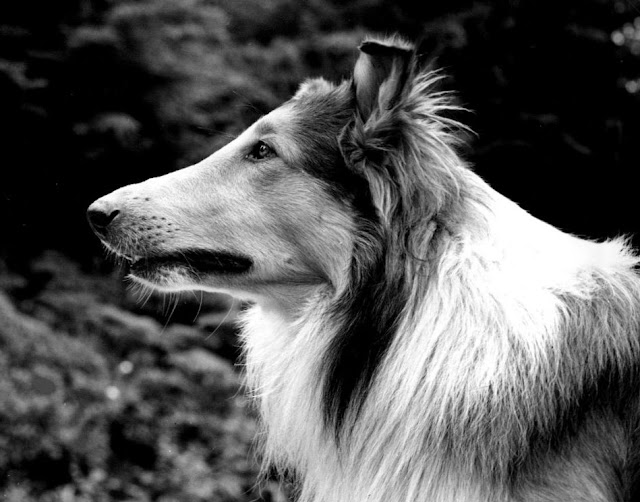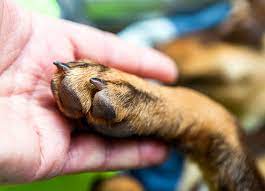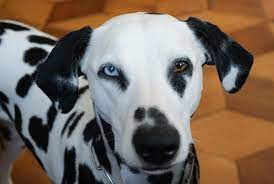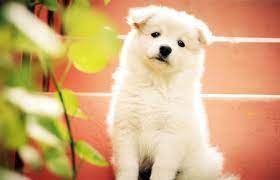All About Puppy
A puppy is a little dog that is still growing. Puppies weighing 1–1.5 kg (1-3 lb) are common, although bigger puppies can weigh up to 7–11 kg (15-23 lb). After birth, all healthy pups develop fast. The coat color of a puppy can vary as the dog grows older, which is frequent in breeds like the Yorkshire Terrier. Puppy is a term that refers to young canines, although it may also apply to wolves, seals, giraffes, guinea pigs, rats, or sharks.
The word puppy comes from the French
In Bilbao, Spain, there is a 17-ton puppy sculpture
Puppy, a tall, flower-covered sculpture by artist Jeff Koons fashioned after a puppy West Highland terrier, has been on display at the Guggenheim Museum in Bilbao since 1997. A fabric-covered mesh topped with 37,000 real flowers gives the 17-ton dog its form. The puppy-shaped garden, which stands 40 feet tall, has become a mascot for both the museum and the community.
A troublesome puppy was Hollywood's most iconic dog
The first dog to play Lassie in a movie was a real "laddie." Pal, a male Rough Collie, was the dog in question. The dog had some difficulties as a puppy, since he was very eager and drove his former owner insane with his constant barking. (The puppy's propensity of following motorbikes, which he never outgrew, was even more disturbing.) After failing to make any progress with Pal, animal trainer Henry Peck directed the puppy's owner to a colleague named Rudd Weatherwax, who was considerably more effective in teaching him. Pal was finally given to Weatherwax by his original owner, and the rest is history. Pal appeared in seven Lassie films and two episodes of the spinoff TV series under the direction of the trainer. Pal had "the most spectacular canine career in film history," according to The Saturday Evening Post, which published his obituary decades after his death.
In Hamilton, Lin-Manuel Miranda's puppy inspired a song
Aaron Burr and Alexander Hamilton sing "Dear Theodosia" to their newborn children in the Tony Award-winning musical Hamilton. The sweet song's inspiration, however, was not a newborn baby. It was written the week Lin-Manuel Miranda rescued Tobillo, a stray dog he and his wife discovered while on vacation in 2011.
A puppy destroyed half of John Steinbeck's of mice and men manuscript
Of Mice and Men may star one of America's biggest animal lovers—the rabbit- and puppy-loving Lennie—but, paradoxically, the novel's survival was once threatened by a puppy. Toby, John Steinbeck's Irish setter, was going through his teething phase in May 1936. He trashed half of his master's manuscript for Of Mice and Men one night when he was left alone, consuming two months of effort... and Steinbeck had no backup copies. The author, on the other hand, found it difficult to remain enraged with the dog. "I was quite enraged," Steinbeck wrote, "but the poor little man could have been behaving critically." "I didn't want to mess up a good thing."He just dug down and rebuilt the shredded chapters. "I didn't want to ruin a wonderful dog for a novel I'm not sure is decent at all," he said.
Keith Richards had a puppy smuggled through British customs once
A fan gifted guitarist Keith Richards a collie puppy named Ratbag while the Rolling Stones were on tour in the United States in 1964. Rather than putting the puppy in quarantine, Richards sneaked it through British customs beneath his coat when he returned to the UK. The dog became one of Richards' most cherished pals, and a biographer subsequently said that the singer "seemed to identify [with Ratbag] more than anybody else."
The puppy of Barack Obama has his own baseball card
Bo, a 6-month-old Portuguese water dog, was acquired by the Obamas in April 2009. The White House created an official baseball card featuring fascinating facts about America's First Pooch that summer. (For example, he is unable to swim.) The collectable card is still available for download on the internet.
At birth, puppies evolved to be blind and deaf
When puppies are born, they are blind and deaf. Their eyelids are tightly shut and their ear canals are sealed on the first day. Why? In a nutshell, it's an evolutionary trade-off. Due to the fact that pregnancy might impair a carnivore's capacity to hunt, dogs have evolved to have short gestation periods. Canine moms didn't had to take extended pauses from hunting because of their short pregnancies. Puppies aren't born completely formed because dog embryos spend so little time in the womb (around two months), and neither are their eyes or ears.
Puppies, too, have baby teeth
Puppies, like many other newborn animals, are born toothless. A puppy's 28 baby teeth will begin to emerge between the ages of 2 and 4 weeks. Those baby teeth fall off at 12 to 16 weeks of age, and by the time puppies are 6 months old, they should have a full set of 42 adult teeth.
A lot of naps are taken by puppies
Puppies, like children, require a lot of sleep—up to 15 to 20 hours a day. The American Kennel Club highly recommends dog owners not to disturb sleeping pups since sleep is essential for a puppy's brain, muscles, and immune system development. Puppy parents should also provide a specific sleeping place for their dogs so that they may sleep well.
Newborn pups are unable to defecate.
Yes, it is correct! Puppies in need of their mother's assistance in going to the toilet. If you've ever had a puppy, you know that this isn't a long-term issue!
After the first week, everyone should have doubled their birth weight
If everything goes according to plan and your puppy is growing healthy and strong, he or she should be able to double his or her birth weight within the first week of life. In just a week, I've grown to double my original size!
Growth
Puppies emerge from an amnion that is chewed off and devoured by the mother dog after an average of 63 days of gestation. Puppies start nursing nearly right away. If the litter has more than six puppies, and one or more are evident runts, human involvement in hand-feeding the stronger babies is required to guarantee that the runts receive adequate nutrition and attention from the mother. Puppies are progressively weaned and begin to consume solid food after they reach the age of one month. The mother may feed the puppies partially digested food or allow them to eat some of her solid meal. At this period, the mother typically refuses to breastfeed, however she may allow them to nurse for comfort on occasion.
Puppies spend the majority of their time resting and the remainder eating at first. They immediately gather into a heap and get upset if they are removed from their littermates by even a short distance.
Puppies have a fully developed sense of smell when they are born. They can't even open their eyes. A puppy's senses develop fast during the first two weeks. Puppies use their noses to discover their mother's teats at this period, as well as to locate their littermates if they become separated by a short distance. Puppies open their eyes nine to eleven days after they are born. Their retinas are underdeveloped at initially, and their eyesight is weak. Puppies do not have the same vision as adult dogs. Puppies' ears are also shut until around thirteen to seventeen days after birth, following which they begin to listen to noises more actively. Puppies generally begin to growl, bite, wag their tails, and bark between the ages of two and four weeks.
Puppies grow fast throughout the first three months of their lives, especially once their eyes and ears open and they are no longer totally reliant on their mother. Their coordination and strength increase, and they spar with their littermates before venturing out into the world. They engage in activities such as wrestling, chasing, domination, and tug-of-war.
Touch is the first sense to develop
Puppy pups get their initial sensation of touch after being born without most of their senses completely developed. A puppy's mother will kiss and nuzzle them almost from the time they are born, enhancing their sense of touch. Your puppy's need for touch will continue throughout their life.
Friendships
Puppies are highly sociable creatures who spend the majority of their waking hours with their mother or littermates. Puppies acquire social skills around people when they are socialised with humans, especially between the ages of eight and twelve weeks. Those that do not acquire enough socialisation during this time may grow up to be frightened of humans or other canines. The ideal period for socialisation is between eight and twelve weeks; professional animal trainers and the American Kennel Club recommend that pups be introduced to "100 People by 12 Weeks" and have had exposure to a diverse range of people and situations.
C-Section is usually used to born certain dog breeds
Purebred dogs might have unusual body dimensions, which can make giving birth difficult. C-sections are more common in breeds with very big heads than in breeds with smaller skulls. In a 2010 study of 22,005 dog litters in the United Kingdom, it was discovered that terriers, bulldogs, and French bulldogs had Caesarian deliveries more than 80% of the time. Scottish terriers, miniature bull terriers, Dandie Dinmont terriers, mastiffs, German wirehaired pointers, Clumber spaniels, and Pekingeses were the other breeds with the greatest rates of C-sections, according to the research.
A total of 1.2 million babies are expected to be born throughout the world
Another fascinating statistic about puppies is that the number of puppies born each day much outnumbers the number of human infants, with about 1.2 million puppies compared to 360,000 babies. That's almost three times the number of puppies as people!
The number of puppies produced is determined on the breed.
Varying dog breeds have different litter sizes (the number of pups born at the same time). Small litters are more common in older or smaller dogs, whereas larger litters are more common in younger or larger dogs. Tia, a Mastiff breed dog, had the biggest litter on record with 24 puppies. Congratulations!
Litters in some dog breeds are larger than in others
In general, smaller breeds have fewer litters, whereas larger dogs produce more puppies. In 2004, a Neapolitan mastiff in Cambridgeshire, UK, gave birth to the world's largest litter by Caesarian section to a batch of 24 puppies. However, extremely little dogs do occasionally give birth to huge litters. In 2011, a Chihuahua in Carlisle, England, gave birth to ten puppies, more than twice the usual number. Each was under 2.5 ounces in weight.
Green puppies are born in some cases
A puppy born green in a light-colored litter is not uncommon. In fact, British canines made the headlines on two separate instances in 2017 for giving birth to green-tinted puppies. A 2-year-old chocolate lab in Lancashire, United Kingdom, gave birth to a litter that included a mossy-green puppy in January. Fiona, the green-skinned monster from Shrek, inspired her owners to call her FiFi. A golden retriever in the Scottish Highlands gave birth to a green-coated youngster called Forest just a few months later. How did Kermit and the pups end up sharing a shade? Biliverdin, a green pigment present in dog placentas, can discolour the fur of a light-haired puppy in rare circumstances. It isn't pee.It isn't, however, permanent. Over the course of a few weeks, the green colour fades away.
As they mature, their coat colour may vary
Puppies' coats, like people', may change colour as they get older. Color patches can alter and expand, and how they do so varies by breed. For example, Dalmatians do not develop their renowned markings until they are two or three weeks old. If your puppy is purebred, you can roughly anticipate their appearance based on how their parents look, but it might be more difficult with crossbred or mixed breed puppies.
Your yawns are not contagious to puppies
Have you ever noticed that when one person yawns, others may yawn as well? Humans, baboons, chimps, and, yes, dogs are all affected by contagious yawning, which is considered to be a sign of empathy. However, according to a study published in Animal Cognition, young dogs aren't vulnerable to catching yawns from birth. Swedish researchers took a group of 35 dogs aged 4 to 14 months on tightly supervised play dates in 2012, simulating yawns in front of each unique dog. Canines under the age of 7 months did not react, but many older dogs responded with a yawn of their own. This trend is similar to what occurs in people, when offspring do not pick up the habit.Children don't take up the practise of infectious yawning until they're approximately four years old, when they begin to develop social abilities like as empathy. These findings show that dogs, like humans, may learn empathy throughout their puppyhood.
JFK was once given a very special puppy by the Soviet Union
Dogs have the ability to bring out the best in people, especially political opponents. First Lady Jackie Kennedy and Soviet Premier Nikita Khrushchev got started talking about Strelka, the world-famous dog who had recently been put into low-Earth orbit by the Soviet space programme, while sat next to each other at a state dinner in Vienna in the early 1960s. Following that, Khrushchev sent one of Strelka's newborn daughters to the Kennedys. Pushinka was the name of the puppy, which means fluffy in Russian.
A museum in Boston has engaged a puppy to search for art-destroying pests
Riley, a Weimaraner puppy, was "hired" by Boston's Museum of Fine Arts in early 2018 to detect undesirable bugs that, if left unchecked, may destroy valuable paintings. Riley is learning to detect art-destroying insects such as textile-eating moths and wood-boring beetles. In January 2018, assistant director Katie Getchell told The Boston Globe, "Pests are a continuous problem for museums."
"Thinking about this as a new method to approach the problem is intriguing." She believes that if Riley does a good job, other museums and archives that collect infestation-prone items may be able to utilise trained canines as a bug deterrent as well.
Puppies are being judged by IBM's Watson right now
Not every puppy has the potential to become a guide dog. Healthy, confident, industrious, and not easily distracted guide dogs are required. At the end of the day, many dogs aren't made out for this line of work—only approximately 36% of trainee dogs at Guiding Eyes for the Blind, a New York-based organisation that trains and deploys seeing eye dogs, make it. Watson, the IBM supercomputer famed for winning Jeopardy, comes into play here. Using data on the temperament, medical history, and genetics of the dogs, IBM has built a software for Watson that lets it estimate how likely particular puppies are to graduate from Guiding Eyes' training school.Using data on the temperament, medical history, and genetics of the dogs, as well as the personality qualities of their trainers, IBM has built a software for Watson that lets it estimate how likely particular puppies are to graduate from Guiding Eyes' training school.
Puppies can help you be more productive
That dog photo at your office cubicle might be more valuable than you know. Participants in a productivity study at Hiroshima University in 2012 were instructed to look at photographs from one of three categories: delicious food photos, adult animal photos, or puppy and kitten photos. They were then instructed to play a board game that demanded a high level of accuracy. People who had recently seen puppies and kittens, it turned out, had an easier time concentrating on the work at hand than those who had seen other sorts of pictures.
Our ancients from the stone age cared for their puppies extremely well
Archaeologists in Germany unearthed the fossilised jawbone of a 14,000-year-old puppy in 1914. The jaw belonged to a 27- or 28-week-old puppy, according to a 2018 research on the specimen, and it was a sick puppy at that. The teeth revealed symptoms of canine distemper virus, a life-threatening illness for which there is now no treatment. According to the analysis of the bone, the animal initially became ill at the age of 19 weeks. "A dog with a bad case of distemper will die in less than three weeks without appropriate treatment," research co-author Luc Janssens said in a news statement, "yet this youngster survived for another eight weeks."Despite the fact that the puppy would have been useless to its prehistoric human owners, they kept it clean, warm, and well-fed for months, allowing it to live longer than it would have otherwise.
Onychectomy
The technique of docking originated as a way to keep working canines safe from harm. Docking is currently mostly done for aesthetic purposes, and certain breeds' tails are routinely cut ranging from little to almost completely. Many countries, including Australia, parts of Canada, and the majority of European countries (Austria, Greece, Finland, Netherlands, Italy, the Czech Republic, Turkey, Poland, Slovakia, England, Scotland, Slovenia, Ireland, Norway, and Sweden), have banned cropping and docking for cosmetic purposes, while others, such as the United States, have allowed it. The American Veterinary Medical Association opposes the practise as of 2008.Some breeders choose to declaw the dogs in order to prevent future damage from scratching or, in the case of dewclaws, ingrown and ripped-off nails. Docking and declawing operations are generally performed by a veterinarian or an experienced breeder during the first few days following birth.
They are not running around live at the puppy bowl ( sorry )
The Puppy Bowl, a furry Super Bowl parody, first shown on Animal Planet in 2005. The Puppy Bowl, unlike the real game, is not aired live, which may surprise viewers. Instead, the competition is filmed over the course of a week. With the aid of 100 or more canine wranglers, the team spends two days shooting the canines.
More than their parents, puppies enjoy " Baby talk"
According to new research, pups, like people, tend to grow out of baby language. In a 2017 research, 30 women were instructed to gaze at a variety of photos of people and pets and say the following pre-written line: "Hello there! Hello, sweetheart! Who's the decent kid? Come on in! Good job, young man! Yes! Come on in, darling! What a nice young man!" The human test subjects talked at a higher range when gazing at canine photographs, especially puppy photos, to no one's surprise. The recordings were then played for 10 adult dogs and 10 puppies by the researchers. When the baby-talk recordings were played, almost all of the puppies began barking and rushing toward the speaker.The adult dogs, on the other hand, seemed to be completely unconcerned with the recordings.
Dalmatians Puppies without spots are born Dalmatians
Dalmatians have the most distinctive coat of any dog breed, beloved by firemen, Disney fans, and George Washington. Dalmatians, at least full-grown ones, do. They are born white and spotless as pups. After four weeks or so, the marks generally appear. (A tiny percentage of Dalmatian pups are born with one or two big black patches, which are not permitted in most competitive show rings.)
Puppies know how to use their eyes to manipulate you
Those cute "puppy eyes" are an intentional effort to grab our attention, not an incidental indication of canine feeling. Puppies (and adult dogs) have discovered that lifting their brows, which makes their eyes look larger and sadder, attracts attention. When dogs are aware that people are observing them, they are more prone to produce theatrical facial expressions like puppy-dog eyes, according to a 2017 research. It also works. According to studies, shelter puppies who make these looks are adopted faster than canines who display other characteristics such as waving their tails.
Puppies can have twins that are exactly the same
Scientists have no idea how frequent identical twin pups are since no one has ever been able to show that they exist. During a C-section on a pregnant Irish wolfhound in 2016, Kurt de Cramer, a South African veterinarian, discovered something strange. Normally, each puppy receives its own placenta, but de Cramer discovered that two of the litter's seven puppies shared a single placenta. The puppies were genetically similar, according to testing. It was the world's first documented example of identical twin pups.
They have been successfully cloned ( and re-cloned) by scientists
Dolly the sheep was the first animal clone to be successful in 1996. Geneticists in South Korea used the same method to create the world's first canine clone, an Afghan hound named Snuppy, nine years later. Snuppy died in 2015 at the respectable age of ten, but his journey is far from done. Four pups were cloned from his stem cells in 2017, according to experts. Unfortunately, one of the puppies died shortly after delivery, but the other three survived. These young pups, scientists believe, will demonstrate how healthy cloned animals are in comparison to their normally conceived counterparts.
When a puppy reaches the age of one, they are considered an adult
That's roughly equivalent to 15 human years. Teenage dogs are still adorable.
There were 24 pups in the largest litter ever recorded.
This astounding truth about puppies is recognised in the Guinness Book of World Records as one of the most nearly incredible facts about puppies! The 24 pups were delivered via Caesarean section in the UK in 2004 to a Neapolitan mastiff named Tia, however one was still born and three others perished in the first week.
It's beneficial for you to look at puppy photographs!
According to Japanese experts, gazing at photos of beautiful newborn animals helps individuals focus better. So maybe reading this article may help you ace your next school test! (Just in case...), studying is also a smart idea.

















